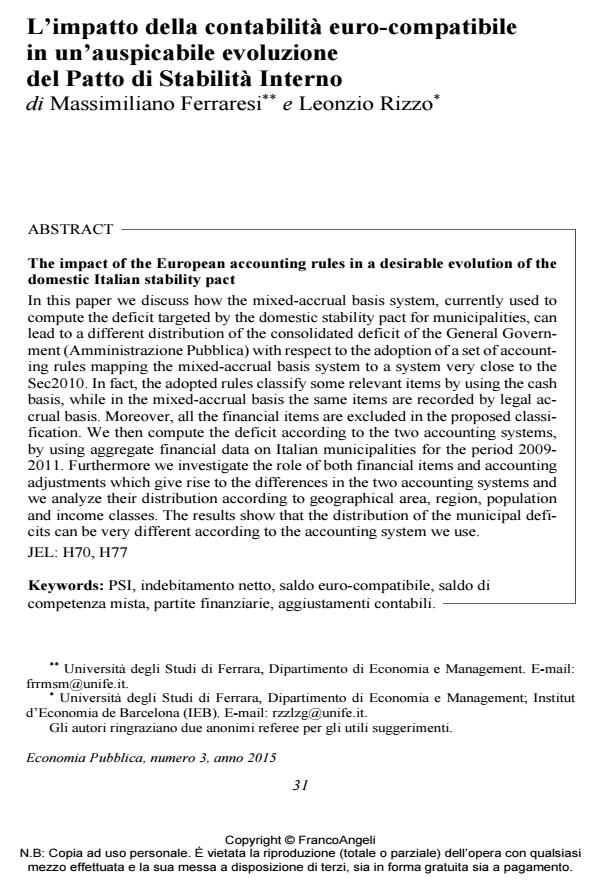The impact of the European accounting rules in a desirable evolution of the domestic Italian stability pact
Journal title ECONOMIA PUBBLICA
Author/s Massimiliano Ferraresi, Leonzio Rizzo
Publishing Year 2016 Issue 2015/3
Language Italian Pages 27 P. 31-57 File size 287 KB
DOI 10.3280/EP2015-003002
DOI is like a bar code for intellectual property: to have more infomation
click here
Below, you can see the article first page
If you want to buy this article in PDF format, you can do it, following the instructions to buy download credits

FrancoAngeli is member of Publishers International Linking Association, Inc (PILA), a not-for-profit association which run the CrossRef service enabling links to and from online scholarly content.
In this paper we discuss how the mixed-accrual basis system, currently used tocompute the deficit targeted by the domestic stability pact for municipalities, canlead to a different distribution of the consolidated deficit of the General Government(Amministrazione Pubblica) with respect to the adoption of a set of accountingrules mapping the mixed-accrual basis system to a system very close to theSec2010. In fact, the adopted rules classify some relevant items by using the cashbasis, while in the mixed-accrual basis the same items are recorded by legal accrualbasis. Moreover, all the financial items are excluded in the proposed classification.We then compute the deficit according to the two accounting systems,by using aggregate financial data on Italian municipalities for the period 2009-2011. Furthermore we investigate the role of both financial items and accountingadjustments which give rise to the differences in the two accounting systems andwe analyze their distribution according to geographical area, region, populationand income classes. The results show that the distribution of the municipal deficitscan be very different according to the accounting system we use.
Keywords: domestic stability pact; deficit; European accounting rules; internal accounting rules; financial items; accounting adjustments
Massimiliano Ferraresi, Leonzio Rizzo, L’impatto della contabilità euro-compatibile in un’auspicabile evoluzione del patto di stabilità interno in "ECONOMIA PUBBLICA " 3/2015, pp 31-57, DOI: 10.3280/EP2015-003002